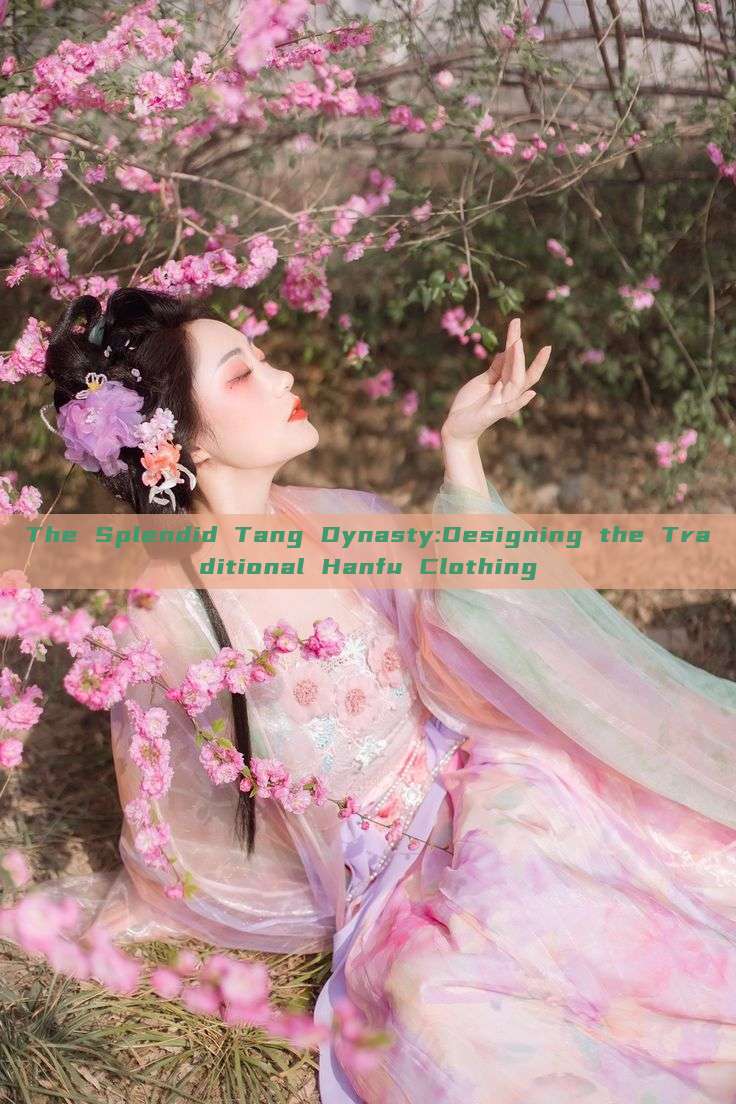In the heart of China, during the Tang Dynasty, a time of unparalleled prosperity and cultural richness, the Hanfu clothing emerged as a symbol of elegance and power. This article delves into the design aspects of Hanfu, a Traditional Chinese clothing that reflects the essence of the Tang era.

The Tang Dynasty, spanning from 618 to 907 AD, was a golden age in China's history. It was a time of cultural and artistic flourishing, where poetry, music, and fashion all reached new heights. The Hanfu, a traditional Chinese clothing, underwent significant evolution during this period, influenced by the dynasty's open-mindedness and willingness to embrace diverse cultural influences.
Designing Hanfu for the Tang Dynasty is a task that requires a deep understanding of the historical context and cultural significance. The color palette used in Hanfu design during this era was vibrant and rich, reflecting the dynasty's prosperity. Shades of red, green, and blue were highly popular, often combined with intricate patterns and designs. These patterns were often inspired by nature, such as flowers, birds, and clouds, adding a touch of elegance to the clothing.
The design of Hanfu also emphasized comfort and functionality. The clothing was designed to be both practical and stylish, with layers of different materials used to create a comfortable and warm garment. The use of silk and other luxurious materials was common, adding a touch of luxury to the design.
The accessories used in Hanfu design during the Tang Dynasty were also significant. Jewelry, such as necklaces, earrings, and bracelets, were often made from precious stones and metals. These accessories added a touch of glamour to the overall look, complementing the vibrant colors and intricate patterns of the clothing.
The design of Hanfu during the Tang Dynasty also reflected the social hierarchy. Different colors and styles of Hanfu were worn by different social classes, with the nobility wearing more elaborate and luxurious designs. This was a time when fashion was not just about personal expression but also a way to show social status and identity.
The influence of foreign cultures, particularly those from Central Asia and the West, also influenced the design of Hanfu during this era. The Tang Dynasty was an era of open trade and cultural exchange, which allowed for the incorporation of new ideas and designs into Hanfu clothing. This fusion of cultures resulted in innovative designs that were both traditional and modern, reflecting the dynastic era's willingness to embrace diversity.
In conclusion, the design of Hanfu during the Tang Dynasty was a reflection of the era's prosperity, cultural richness, and willingness to embrace diversity. The vibrant colors, intricate patterns, comfortable design, and luxurious accessories used in Hanfu reflected the social hierarchy and status of individuals. The influence of foreign cultures also played a significant role in shaping the design of Hanfu during this era. Today, as we look back at the history of Hanfu and the Tang Dynasty, we can draw inspiration from these designs to create modern汉服 that are both traditional and contemporary.
In modern times, there has been a revival of interest in traditional Chinese clothing, including Hanfu. Designers are exploring ways to incorporate traditional elements into modern designs, creating clothing that is both stylish and respectful of China's rich cultural heritage. The study of Hanfu from the Tang Dynasty provides a valuable source of inspiration for these designers, allowing them to create contemporary汉服 that are both traditional and modern.
As we move forward in time, let us not forget the rich cultural heritage left behind by the Tang Dynasty and its beautiful Hanfu clothing. By studying and recreating these designs, we can continue to honor the legacy of this golden age in China's history and pass it on to future generations. The design of Hanfu during the Tang Dynasty continues to inspire us today, reminding us of a time when fashion was not just about personal expression but also a reflection of an era's cultural richness and prosperity.





